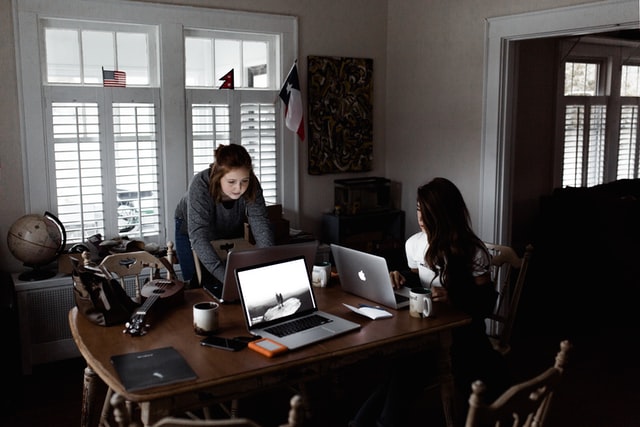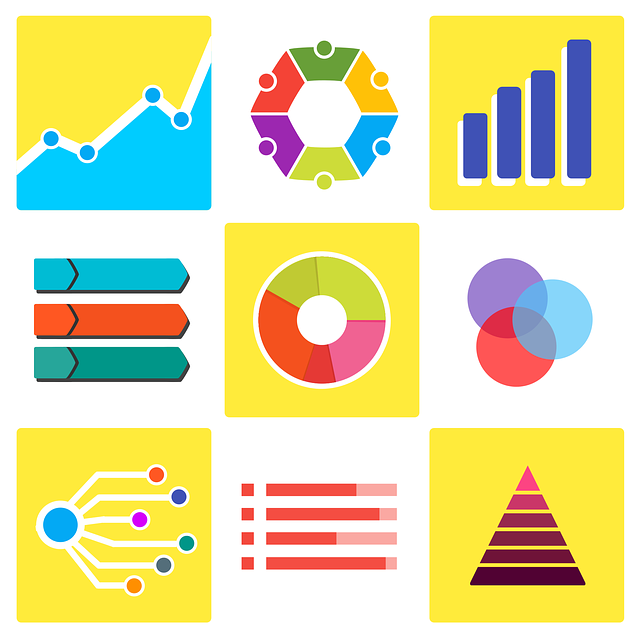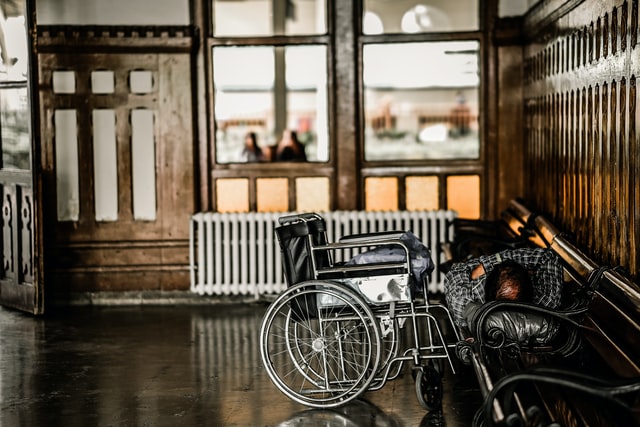Click here to go to our other COVID-19 pages
First published May 2020
Revised September 2020
Last updated 8 November 2022
This page addresses some key questions about understanding the impacts of a pandemic like COVID-19 family violence, whānau violence and sexual violence. It includes links to research, reports, technical briefs and statements. Understandings and evidence are still emerging.
We add new research, reports, guides and policies related to COVID-19 and violence to our library. To find these resources, see our library quick topic search on COVID-19.
On this page:
Do family, whānau and sexual violence escalate during emergencies like COVID-19?
Why and how are family, whānau and sexual violence impacted during emergencies?
Te Tiriti o Waitangi and equity issues: Why are some groups at greater risk?
Do family, whānau and sexual violence escalate during emergencies like COVID-19?
Yes, research shows that gender-based violence (GBV), violence against women and children, sexual violence and interpersonal violence escalate and intensify during natural disasters and emergencies like a pandemic. Our library includes some of the many research reports.
Research from the University of Otago has found that 9% of New Zealanders completing an online survey reported they had directly experienced some form of family harm over the lockdown period, including sexual assault, physical assault, or harassment and threatening behaviour (Psychological distress, anxiety, family violence, suicidality, and wellbeing in New Zealand during the COVID-19 lockdown: A cross-sectional study, November 2020). NZFVC Co-Director Janet Fanslow has said that the research highlights the high rates of family violence and the importance of having support services well resourced to be able to respond. Janet Fanslow also said:
“These results are consistent with international reports of how these problems can escalate and intensify during periods of lockdown, but should not be misconstrued as causal, i.e., the lockdown did not cause the problem, but instead the conditions of lockdown may have intensified pre-existing problems."
Data from around the world, published in the Issue Brief COVID-19 and Ending Violence Against Women and Girls (UN Women, April 2020) indicates that violence against women and girls has intensified since the COVID-19 outbreak. This led to the coining of the term "shadow pandemic."
In a Joint Leaders' statement - Violence against children: A hidden crisis of the COVID-19 pandemic (April 2020), the World Health Organization and other global experts highlight that the COVID-19 situation can increase children’s risk of experiencing various forms of violence.
UN Women (April 2020) highlights emerging trends and impacts of online and technology facilitated violence against women and girls during COVID-19. In a statement accompanying a webinar about online VAW, the Women's UN Report Network (November 2020) wrote:
"Online is the new front line for violence against women and girls, and it has increased exponentially during COVID-19 and the lockdowns. Online violence is an epicentre of risk, intersectional and intergenerational, and compounding multiple forms of violence against women and girls, including trafficking."
The United Nations Office on Drugs and Crime report Global Report on Trafficking in Persons (February 2021) indicates an overall worsening global trend in human trafficking since COVID-19.
A second ‘Research Round Up’ on violence against women and children (Center for Global Development, September 2020) summarises:
“There is increasing evidence that the COVID-19 pandemic and associated policy response measures increase VAW/C across contexts. Where mixed or decreasing trends appear, there is emerging evidence to suggest underreporting may in part account for results. … As in our last round up, service providers report additional needs from clients coupled with additional challenges due to lockdown measures and strained resources.”
A survey of more than 400 women and nonbinary people during COVID-19 from the UK found high rates of online abuse with gender cited most often as the reason for online abuse (The Ripple Effect, Online abuse during COVID-19, Glitch and EVAW, September 2020).
A survey of 15,000 women in Australia found that for many women, the start of the pandemic coincided with the onset or escalation of violence and abuse. The researchers reported "Two-thirds of women who experienced physical or sexual violence by a current or former cohabiting partner since the start of the COVID-19 pandemic said the violence had started or escalated in the three months prior to the survey" (The prevalence of domestic violence among women during the COVID-19 pandemic, AIC, July 2020).
A UK survey found that of women living with their abuser during lockdown, 61% said the abuse had worsened. Survivors with children, who were currently experiencing abuse, said things were also worse for their children. Over half (53%) said their children had seen more abuse to the survivor. Over a third (38%) said that their abuser had shown an increase in abusive behaviour towards the children (A Perfect Storm: The impact of the Covid-19 pandemic on domestic abuse survivors and the services supporting them, Women's Aid, August 2020).
 An Australian survey of domestic and family violence service providers (Women’s Safety NSW, April 2020) found that 75% of frontline family violence workers reported an increase in the complexity of client needs in the context of COVID-19. 50% of frontline workers indicated that there had been reports of worsening or escalating violence. This report also lists types of violence that women reported experiencing which were specifically related to COVID-19.
An Australian survey of domestic and family violence service providers (Women’s Safety NSW, April 2020) found that 75% of frontline family violence workers reported an increase in the complexity of client needs in the context of COVID-19. 50% of frontline workers indicated that there had been reports of worsening or escalating violence. This report also lists types of violence that women reported experiencing which were specifically related to COVID-19.
Another survey carried out since the easing of COVID-19 restrictions in NSW (Women's Safety NSW, September 2020) found continuing impacts of COVID-19 on domestic and family violence. 45% of service providers stated that their client numbers had continued to rise since COVID restrictions began to lift and when compared to this time last year. 80% had noticed an increase in the percentage of higher risk cases and 86% had noticed an increase in the complexity of client needs since the lifting of COVID restrictions.
Information from services working with perpetrators is available in Ensuring responsible perpetrator work during the COVID-19 pandemic (European Network for the Work with Perpetrators of Domestic Violence, 2020) and Results: Survey of professionals who work with perpetrators of domestic abuse: Experiences of operating in the context of COVID-19 (Drive Partnership, August 2020).
In Aotearoa New Zealand, we do not yet have a comprehensive picture of the impact of COVID-19 on people's experiences of family, whānau and sexual violence. Research has not been carried out with victim/survivors and others directly affected. However important information from service providers is available.
The Human Rights Commission states that reports from service providers indicate increases in service demand and significant unreported experiences of violence. They also reported a range of impacts for women experiencing violence including distress, isolation, difficulties accessing support, and perpetrators utilising COVID-19 related restrictions to further abuse against adult and child victims (Submission of the New Zealand Human Rights Commission for the Special Rapporteur on violence against women, its causes and consequences: The impact of COVID-19 and the increase of domestic violence against women, Human Rights Commission, July 2020).
Specialist domestic violence service provider Shine says since the first COVID-19 lockdown both the number of referrals and the severity of violence have rapidly increased (September 2020). In the webinar COVID-19 and family and whānau violence: What have we learnt and where to from here? hosted by NZFVC (September 2020), Rachel Smith stated:
“We were already living in a country founded on violence, with intersecting patterns of violence – huge levels of interpersonal violence, structural violence, the ongoing violence of colonisation. So the women and children experiencing violence in their whānau and families that we were supporting before we went into COVID-19, they're already living in constricted life spaces, they're already trying to navigate their safety within a system that has completely inadequate safety options for them. They are often having to seek help from services, as Denise Wilson’s research shows, that didn’t know how to give them help in ways that were respecting of who they are and were dignifying. If you understand violence as a crime against people's self-determination, and you put a COVID context on top of that … We saw a removal of social supports but most concerningly we also saw a removal of the responsivity of services. It is concerning because I think it's recreating ways of working that many of us don't want to be working in.”
In the webinar Family violence in a time of pandemic hosted by UN Women Aotearoa New Zealand and the United Nations Association of New Zealand (June 2020), Chief Executive Ang Jury talks about the experiences of Women's Refuge during COVID-19 including service use, what we don't know yet and her concerns about the time ahead. Parliamentary Under-Secretary to the Minister of Justice (Domestic and Sexual Violence Issues) Jan Logie provided an overview of the Government's response (including the National Pandemic Working Group for Family Violence and Sexual Violence). Superintendent Eric Tibbott (NZ Police) and Mele Wendt (White Ribbon Ambassador) also discuss their experiences. The speakers noted that the data does not represent the whole picture of what is happening in families, and expressed concerns about the likely escalation in violence as the impacts of the pandemic and related restrictions continue.
Media has reported information about police responses to 'family harm incidents' in managed isolation hotels.
Why don’t we have more statistics on family, whānau and sexual violence during COVID-19? Does it matter?
There are many reasons it can be difficult to get accurate or meaningful statistics about gender-based violence during an emergency. The UNICEF Brief Moving Beyond the Numbers: What the COVID-19 pandemic means for the safety of women and girls (September 2020) states:
"In the context of COVID-19, as in other emergencies, the number of cases documented by service providers can never capture the overall scale or severity of the violence women and girls are facing. Similarly, variations in the number of survivors who connect with response services – whether an increase or decrease in help-seeking – can occur for multiple reasons, many of which have nothing to do with the actual rates of violence taking place. Therefore, taking action to address GBV must be a priority regardless of whether or not increases in reports have been formally documented and, most critically, GBV incident data must never be treated as a prerequisite for taking action."
 The Brief emphasises that the "increased threat to women and girls is predictable based on gender inequality and patterns of violence that existed before the COVID-19 pandemic." It emphasises "In order to make effective policy and programming decisions, governments, policymakers and donors must go beyond the numbers and aim for a more comprehensive understanding of dynamics driving pre-existing violence against women and girls and how the current environment exacerbates these risks." As part of this, it recommends:
The Brief emphasises that the "increased threat to women and girls is predictable based on gender inequality and patterns of violence that existed before the COVID-19 pandemic." It emphasises "In order to make effective policy and programming decisions, governments, policymakers and donors must go beyond the numbers and aim for a more comprehensive understanding of dynamics driving pre-existing violence against women and girls and how the current environment exacerbates these risks." As part of this, it recommends:
"Establish regular check-ins with GBV service providers and local women’s groups to remain abreast of trends and/or new developments in safety risks for vulnerable populations. Utilize their feedback to inform programming adaptations and conduct advocacy with local/national governments as needed. In the context of the COVID-19 pandemic, local women’s groups and grassroots organizations are playing a crucial role in understanding how to reach women and girls in a safe and effective manner. Staying connected with them is critical."
UNICEF has published a two-part series which asks experts about ethics, measurement and research priorities for collecting data on violence against women and violence against children in the context of COVID-19 (April 2020). UN Women has also developed a brief outlining guiding principles and recommendations for Violence Against Women and Girls Data Collection during COVID-19 (April 2020) and a Decision Tree (June 2020). UNICEF has further published Research on violence against children during the COVID-19 pandemic: Guidance to inform ethical data collection and evidence generation, which includes a decision tree (October 2020).
In COVID-19 and Violence against Women and Children: A Second Research Round Up (Center for Global Development, September 2020), the authors report the growing number of studies still have a limited focus on the basic question of whether violence levels have increased during COVID-19. They recommend future research focus on “actionable” research, informing evidence-based policy and financing responses rather than simply examining trends. Also see their previous literature review, COVID-19 & Violence against Women and Children: What Have We Learned So Far? (June 2020). A third research round up, COVID-19 and Violence against Women and Children: A Third Research Round Up for the 16 Days of Activism (December 2020), was published which still finds a high majority of research studies are only focused on whether violence has increased. However, this round up also highlights some of the early research exploring pathways for prevention.
Reports from specialist service providers released to date often provide more in-depth exploration of the experiences of victims (based on their work as service providers) as well as suggestions for responses and actions. Organisations in Aotearoa New Zealand have had limited capacity to research and publish reports on the impacts of COVID-19. However, the New Zealand Human Rights Commission submission to the UN Special Rapporteur on violence against women collates information from a number of service providers in Aotearoa New Zealand. In addition, reports from specialist organisations in other countries contribute to understandings of the impacts of COVID-19 and considerations in developing an effective response.
The UNICEF brief Moving Beyond the Numbers: What the COVID-19 pandemic means for the safety of women and girls (2022) explores the data which has shown an increase in reported intimate partner violence, but also a decrease in survivors contacting service for help. In the brief, the authors write:
"This discrepancy is a classic example of why – in every humanitarian emergency - experts advise against relying too heavily on the number of reported cases when making programmatic and policy decisions about GBV.
In the context of COVID-19, as in other emergencies, the number of cases documented by service providers can never capture the overall scale or severity of the violence women and girls are facing. Similarly, variations in the number of survivors who connect with response services – whether an increase or decrease in help-seeking – can occur for multiple reasons, many of which have nothing to do with the actual rates of violence taking place. Therefore, taking action to address GBV must be a priority regardless of whether or not increases in reports have been formally documented and, most critically, GBV incident data must never be treated as a prerequisite for taking action."
Why and how are family, whānau and sexual violence impacted during emergencies?
During a disaster or crisis, it may be harder for people experiencing abuse to access help. Victims may also be unable to use their usual strategies for staying safe. Stay-at-home orders, work from home mandates and the closure of schools and childcare centres mean many adult and child victims are isolated from people and resources that can help (Family violence and COVID‐19: Increased vulnerability and reduced options for support, Usher et al, April 2020).
A person using abuse may have more opportunities or new ways to exert control and use violence during a pandemic. Lockdown and quarantine measures can provide abusers with additional opportunities to monitor, control and manipulate victims. Isolation can also provide new opportunities for perpetrators to hide their violence. The US-based Battered Justice Women’s Project have produced a short video that explores Coercive Control During COVID-19: New Tactics using the power and control wheel (April 2020). They highlight "The tools of coercive control have changed, but its dynamics have not."
Early reports from service providers indicate that perpetrators are using COVID-19 as a mechanism to extend coercive control of partners and ex-partners through shared parenting orders (Women's Safety NSW, 2020).
 Intimate partner violence is a pattern of power, control and coercion. Stress does not cause violence. Australian research on violence in the aftermath of the bushfires has found that seeing trauma or stress (even significant stress) from disasters as causing violence against women led to excusing or colluding with people using abuse. In 'The way he tells it...' : Relationships after Black Saturday (Parker, 2011), one woman said “... because you’ve gone through a trauma, you’ll continually make excuses for someone’s behaviour and you’ll actually feel helpless to escape the situation because they’re suffering.”
Intimate partner violence is a pattern of power, control and coercion. Stress does not cause violence. Australian research on violence in the aftermath of the bushfires has found that seeing trauma or stress (even significant stress) from disasters as causing violence against women led to excusing or colluding with people using abuse. In 'The way he tells it...' : Relationships after Black Saturday (Parker, 2011), one woman said “... because you’ve gone through a trauma, you’ll continually make excuses for someone’s behaviour and you’ll actually feel helpless to escape the situation because they’re suffering.”
International research on natural disasters suggests that increased reports and service demand related to family violence represents the escalation of pre-existing coercive and controlling attitudes and behaviours. This research also suggests that patterns of escalated violence in the context of a disaster may be related to the violent person exerting further control over their family as they feel less control other aspects of their life. This can relate to dominant norms around masculinities, gender and power: see Understanding research on risk and protective factors for intimate partner violence (NZFVC, 2016) and Masculinities and COVID-19: Making the Connections (Promundo, September 2020).
Reports from service providers provide some additional information. In Australia, Monash University is involved in a range of research projects on gender-based violence and help-seeking behaviours during the COVID-19 pandemic. Sexual Assault & Family Violence Centre in Victoria released Practitioners’ report on client experiences during COVID-19 (April 2020). See also the report Pandemic meets Pandemic: Understanding the Impacts of COVID-19 on Gender-Based Violence Services and Survivors in Canada (August 2020).
In England and Wales, the Access to Justice for Women & Girls during Covid-19 Pandemic (August 2020) report documents new and multiple barriers for women experiencing violence when trying to seek help through the protection and justice systems, including the family court, child contact arrangements, sexual violence cases, and more.
 Lockdown, isolation and quarantine situations can mean greater risk of child sexual abuse online, child sexual exploitation of children and young people who are not in school and unsupervised, and sexual violence against young people by peers (on and offline). See Initial Briefing on the COVID-19 Pandemic and the Duty to Prevent Violence Against Women & Girls (End Violence Against Women Coalition, April 2020) and Online and ICT facilitated violence against women and girls during COVID-19 (UN Women, April 2020).
Lockdown, isolation and quarantine situations can mean greater risk of child sexual abuse online, child sexual exploitation of children and young people who are not in school and unsupervised, and sexual violence against young people by peers (on and offline). See Initial Briefing on the COVID-19 Pandemic and the Duty to Prevent Violence Against Women & Girls (End Violence Against Women Coalition, April 2020) and Online and ICT facilitated violence against women and girls during COVID-19 (UN Women, April 2020).
In New Zealand, Netsafe’s quarterly report for April - June 2020 showed increases in service demand for online harm: “Between April and June 2020, Netsafe received 6,880 reports overall which is a 51 percent increase compared to last quarter. It was also Netsafe’s highest personal harm report quarter on record, and there was a 26.4 percent increase compared to last quarter.” Netsafe has published a brief summary of statistics highlighting increasing online harm (November 2020) during and after the lockdown. Commentary from Netsafe chief executive Martin Cocker and community advocates highlight challenges to addressing online harm.
These resource from Canada explores some of the ways that the pandemic is impacting on sexual violence, including sexual exploitation of people experiencing financial strain, and increased opportunities for online grooming and cyber sexual violence. Some sexual violence survivors find wearing masks and isolation difficult (Sexual assault survivors tackle trauma to stay COVID-safe, self-isolate and wear face masks, ABC, July 2020). Rape Crisis Network Ireland has published Together with Survivors: Rape Crisis Adaption and Transformation during Lockdown (July 2020).
UK research with case workers and service users found that stalking has escalated (The Consequences of the COVID-19 Lockdown on Stalking Victimisation, September 2020).
International research on natural disasters also shows that patterns of escalating violence are not restricted to the period during a disaster; elevated patterns of risk continue after the disaster, and well into periods of recovery.
For an overview of peer-reviewed research articles published in academic literature, see the reviews by the Center for Global Development: COVID-19 & Violence against Women and Children: What Have We Learned So Far? (June 2020) and COVID-19 and Violence against Women and Children: A Second Research Round Up (September 2020).
The Ministry of Social Development’s Rapid evidence review: The immediate and medium term social and psycho-social impacts of COVID-19 in New Zealand (May 2020) also provides information based on literature published up to April 2020.
Te Tiriti o Waitangi and equity issues: Why are some groups at greater risk?
Te Rōpū Whakakaupapa Urutā | National Māori Pandemic Group has consistently highlighted the disproportionate impacts on Māori from the COVID-19 pandemic. Their Position Statement (April 2020) says:
"Our experiences of colonisation, coloniality, racism, and a substantial body of evidence from Aotearoa me Te Waipounamu and Indigenous communities around the world, tells us that through pandemics and other crises, unchecked government action and ‘one-size -fits-all’ approaches will exacerbate existing inequities. We are calling for all parts of the government to make decisions and urgently commit resources to meet the aspirations and needs of whānau, Hapū and Iwi Māori."
In Australia, Women's Safety NSW has published Report: Experiences of Indigenous women impacted by violence during COVID-19 (June 2020).
In their COVID-19 and Ending Violence Against Women and Girls Issue Brief (April 2020), UN Women highlights that experience from the Ebola and Zika outbreaks shows that epidemics exacerbate existing inequalities, including those based on economic status, ability, age and gender.
The Ministry for Women has put out information about how COVID-19 is affecting women (April/May 2020) noting that some groups of women will experience greater impacts than others.
Shakti Community Council has written up Challenges in responding to family violence during a Pandemic like COVID-19 (August 2020). This highlights issues experienced by migrant and refugee (ethnic) women, things that have assisted Shakti to support women during the pandemic and things that could be improved in future.
In the webinar on COVID-19 hosted by NZFVC, Shila Nair from Shakti stated:
“As regards migrant and refugee communities, I think the experience of racism has been quite unique in many different ways especially after the Christchurch terror attacks and the aftermath of that. I think that is an additional factor that our people had to deal with in the context of COVID-19 because they're simply known as migrants and refugees so therefore [it was assumed] they have COVID. I think a large segment of communities underwent having to front up to these kind of remarks as well.”
In The Impact of the Two Pandemics: VAWG and COVID-19 on Black and Minoritised Women and Girls (May 2020), Imkaan (UK) states "No one is immune to coronavirus COVID-19, but structural inequality reproduces disproportionately across diverse communities and exacerbates existing racialised inequalities. For any woman and girl with protected characteristics, the two pandemics increase her risks at multiple interlocking levels." In Australia, reports on the experiences of migrant and refugee women experiencing violence during COVID-19 have been produced by inTouch Multicultural Centre Against Family Violence (April 2020) and Women's Safety NSW (July 2020) - see also information on women on temporary visas. inTouch and Monash University examined 100 case management files, writing in their report on Family violence and temporary visa holders during COVID-19 (September 2020): "We observe that the impact of COVID 19 has been to intensify the impact of the exclusion of temporary visa holders experiencing family violence from safety and support mechanisms, at a time when they need it more than ever."
 COVID-19 at the intersection of gender and disability: Findings of a global human rights survey, March to April 2020 (Women Enabled International) found that decreased access to formal support services meant disabled women and people were more reliant on informal methods of support, which can further expose people to abuse. Institutionalised persons with disabilities were at further risk of violence due to isolation which increases when visitors and monitors may not be allowed in. Disabled people already experience high rates of violence. The Independent Monitoring Mechanism published Making Disability Rights Real in a Pandemic Te Whakatinana i ngā Tika Hauātanga i te wā o te Urutā (January 2021). The report highlights disabled New Zealanders’ experiences of the COVID-19 emergency and outlines seven areas for urgent action.
COVID-19 at the intersection of gender and disability: Findings of a global human rights survey, March to April 2020 (Women Enabled International) found that decreased access to formal support services meant disabled women and people were more reliant on informal methods of support, which can further expose people to abuse. Institutionalised persons with disabilities were at further risk of violence due to isolation which increases when visitors and monitors may not be allowed in. Disabled people already experience high rates of violence. The Independent Monitoring Mechanism published Making Disability Rights Real in a Pandemic Te Whakatinana i ngā Tika Hauātanga i te wā o te Urutā (January 2021). The report highlights disabled New Zealanders’ experiences of the COVID-19 emergency and outlines seven areas for urgent action.
New Zealand, the Ministry of Youth Development’s Youth Pulse Check (May 2020) found that 23% of LGBTQI+ young people and 20% of disabled young surveyed said they felt unsafe in their bubble at least some of the time. Media also reported concerns for LGBTQI people in unsafe homes during lockdown (April 2020). The Human Rights Commission highlights that transgender women experience heightened risks of violence during COVID-19, as trans women:
- Experience societal stigma and discrimination
- Can experience discrimination and barriers in accessing refuges, the justice system and gender-affirming healthcare
- May live in more precarious or unsafe housing situations, resulting in housing instability and homelessness
- May be engaged in precarious work and informal economies
For further reading, see How to include marginalized and vulnerable people in risk communication and community engagement (United Nations Office for the Coordination of Humanitarian Affairs, March 2020). This brief explains why some groups are at particular risk in public health emergencies. It also sets out specific actions to support effective communication and engagement with groups at greater risk.
Information and resources for whānau, communities and kaupapa Māori services are available in Te Whare Māori by Ngā Wai a Te Tūī Māori and Indigenous Research Centre. Information and support services for Pacific, Asian, ethnic, disabled and LGBTQI | Takatāpui+ communities and older people are listed on our COVID-19 page for specific communities.
Go to FAQ part 2: Addressing the impacts of COVID-19


